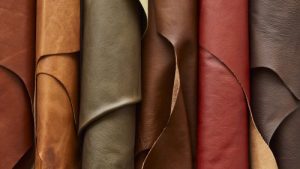1. Variations in Grain:
The surface of a leather hide can have natural variations, such as wrinkles, scars, and insect bites. These unique markings are often seen as desirable and add character to the leather.
2. Breathability:
Leather is a breathable material, allowing air to pass through it. This property makes leather products comfortable to wear, as it helps regulate temperature and moisture.
3. Stretching Ability:
Leather has a natural stretching ability, which allows it to conform to the shape of the wearer over time. This is why leather footwear and garments tend to become more comfortable with continued use.

4. Aging and Patina: High-quality leather develops a unique patina over time. As it ages, the leather’s color may deepen, and it acquires a distinct character and luster, making each piece truly unique.
5. Leather “Grades”: Leather grades are not standardized worldwide, and different regions may have their own grading systems. Terms like “genuine leather” can be misleading, as it is often a lower-grade leather and not an indicator of quality.
6. Leather Sourcing: Leather can come from various animal sources, with cowhide being the most common. Other sources include sheep, goats, pigs, and exotic animals like ostriches and alligators. The type of leather and its characteristics can vary depending on the animal source.
7. Leather’s Longevity: With proper care and maintenance, leather products can last for many years, even decades. Leather has excellent durability, and its strength and resistance to wear make it a long-lasting material.
8. Leather and Temperature: Leather is known for its insulation properties. It can keep you warm in colder temperatures and is also breathable enough to provide comfort in warmer climates.
9. Leather Workability: Leather is a highly versatile material that can be shaped, molded, and stitched. Skilled artisans can create intricate designs and patterns on leather surfaces, showcasing the craftsmanship involved in leatherworking.
10. Sustainable Leather Alternatives: In recent years, there has been a rise in the development of sustainable and eco-friendly alternatives to traditional leather. These alternatives include materials made from plant-based sources, recycled materials, and innovative bio-engineered fabrics.
These secrets and facts about leather highlight the unique properties, craftsmanship, and ongoing innovations within the leather industry.

